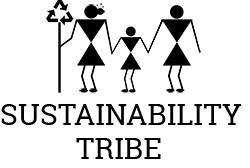In this age of the digital era, it is difficult to keep yourself away from the temptation of new fashion trends; it has become a big part of the lifestyle no matter where you live. However, I experimented in 2017 and survived the entire year without any fashion shopping! Read my experience of no fashion shopping year. Why this extreme step? Because I have been trying to raise awareness about how the traditional fashion industry has so many adverse effects on our society and our planet. Through no fashion shopping year, I also focused on less stuff more experiences lifestyle and wore the same items from my wardrobe for more than even 30 wears creatively. Since then I have limited my fashion shopping to only environmentally and socially sustainable fashion; honestly, I am happier now. Let’s now see, what I researched and learned in my shopping year.
1. STATE OF WORKERS IN THE FASHION INDUSTRY
We are all aware of Rana plaza incidence that took place in Bangladesh in 2013; where many workers were killed making fast fashion clothing in inhuman conditions. Since then, the Fashion revolution started and picked up around the world. Consumers are asking questions to fashion giants through many campaigns like #Whomademyclothes #meetyoumaker.
Of course, there is a positive change in the industry; a lot of fashion designers are moving to ethical fashion and even some consumers are becoming keen on purchasing ethical fashion. Every year the fashion revolution week is celebrated in April with great enthusiasm but we are still a long way to improve consumer awareness about ethical practices or lack of it in the fashion industry.

However, the state of workers and artisans working in the fashion industry is not yet improved significantly yet in each part of the world, be it Columbian mines or Vietnam textile mills or Bangladesh factories. These workers are mainly women or children laborers who get underpaid so much that they hardly survive on these wages. They work in unsafe and dangerous working conditions are exposed to chemicals that can risk their long-term health.
So, while we are so worried about looking in vogue, these laborers who make our clothes just survive hand to mouth. By shopping for new clothes just because we desire not to need to, do we really need to support this inequality?
2. DUMPING USED CLOTHES IN AFRICAN COUNTRIES
While the fashion industry always keeps up out of fashion with constantly changing new trends, many people fell for it and keep on revamping their wardrobes. Keep discarding old items (which they have hardly used) and keep on buying new ones. Now, these discarded fashion pieces created another big industry, which basically takes all your used clothes from the US, Europe even UAE to Africa and sell it to the developing countries or underdeveloped countries like Rwanda, Uganda, Kenya, Tanzania, etc. We think that it’s good that those poor people can use our old clothes. But the fact is these second-hand clothes are harming the new developing economies. They are unable to create or support their own local sustainable textile industry and create any employment through it.
Why are we indirectly deciding the fate of people in these African countries by dumping our used clothes on them? Who gave us that right?
3. WOMEN AND THEIR CONFIDENCE
Some glossy magazines or so-called fashion experts & marketing teams in the fashion industry are telling our women what to wear and how to look good? Aren’t we all educated, independent women able to decide what to wear? I think we are capable of choosing what is comfortable, functional, long-lasting and what we like. We should be also capable of ignoring people who are judging us for what we wear and not noticing what we are.
Plus if we think about our younger generations who fall quickly to fast fashion marketing tactics. So much focus is diverted from personal development to just ‘looking good’ in young girls. We don’t need the fashion industry to decide something about our body image and size. We don’t want our daughters to get wrong ideas of body image and self-confidence, do we? We definitely don’t need to learn the wasteful habits to look trendy in 52 micro-seasons of fashion during a year. You can definitely wear the same clothes again and again till the end of the lifecycle of those clothes and be happy with a capsule wardrobe.

4. HUMAN HEALTH
Our clothes generally contain some hazardous chemicals and toxins like formaldehyde, perfluorinated chemicals, NPD, PPD, VOCs, flame retardants, pesticides, insecticides, and dioxin-producing bleach. These chemicals can have serious adverse health effects including stroke, higher blood pressure, a higher rate of infertility, increased risk of heart attack & even cancer. The children’s clothing also contains the same chemicals. Cheaper the cloth lower can be the quality of clothes and higher could be toxicity. Some manufacturers even use lead salts to create bright hues.
So just by buying and wearing new clothes frequently can lead you to some kind of sickness and diseases. Are you ready to compromise your health just to look fashionable?
5. EFFECTS OF FAST FASHION ON ENVIRONMENT
The fashion industry has a huge contribution to energy and water consumption worldwide. Cotton is water-thirsty, according to WWF, it can take up to 2,700 liters to produce the cotton needed to make a single t-shirt. But Cotton alternatives are not very sustainable as well. Polyester and nylon are common synthetic alternatives to cotton. They are made from petrochemicals that do not biodegrade. Production of these materials consumes significant energy and emits nitrous oxide which is a prominent greenhouse gas.

The fashion industry is also a massive contributor in terms of polluting water, air, and other natural resources. Around 8000 synthetic chemicals are used in manufacturing textiles. The textile companies drain millions of gallons of wastewater to our freshwater sources after treatment and the dyeing of textiles. The leather industry is another culprit of polluting our water resources with its hazardous tanning process. The garments made out of polyester are another source of pollutants. Every time we wash polyester cloths the microfibers are released in wastewater. It is estimated that a single polyester garment releases 1,9000 individual plastic microfibers (microplastics)! Read here about microplastics in more detail.

Fashion from recycled plastic
Making clothes or tee shirts from recycled PET plastic bottles is one of the newer green clothing trends. It definitely helps in reducing plastic waste and upcycling it into useful clothing pieces. It works well especially for sports ware, where water-resistant properties of the fabric are appreciated. But we need to remember that this is a great temporary solution and not the final answer to the plastic problem. Because again such fashion pieces continue to add plastic microfiber pollution to water and air and so not really a great permanent sustainable solution. Rather there is a risk that this ‘fashion from recycled plastics’ industry might even be used by plastic manufacturers to greenwash or justify their production and can help them continue to have demand for their new plastic production. So as a consumer we should be wise in not increasing a huge demand for such ‘short term good’ products.
The fashion industry doesn’t just pollute our water. According to Forbes, the apparel industry is responsible for 10% of all carbon emissions globally. The carbon emissions not just during the production of fashion pieces but also transporting raw material and the final product around the world. That’s why they say your dress is well-traveled than you. Read some facts and statistics about how the fashion industry contributes to huge resource waste.
6. FASHION WASTE TO LANDFILL
Most of the fast-fashion clothing is made with such low quality to achieve the lower price that you can’t use them longer. Rather the fast-fashion businesses want you to come back to buy your next clothes soon. So most of the fast fashion clothes end up in a landfill. Now, most of these are made out of synthetic blend material and do not bio-degrade so they sit there on landfills and contribute to methane gas emission over time. Unfortunately, the garment waste is even getting burned instead of recycling which emits harmful gases. Up to 95% of the textiles that are landfilled each year could be recycled. Read here some facts about how the fashion industry contributes to huge resource waste.

There is the only way to tackle fashion waste is to avoid synthetic fibers, invest in slow fashion, quality pieces and use it again and again, upcycle them and try not to send them to landfill. Fashion waste is also the waste created while manufacturing garments, fashion accessories. Good news is now the new wave of zero-waste fashion manufacturing processes is getting popular to reduce fabric scraps.
7. MARKETING TACTICS OF THE FASHION INDUSTRY
The fast fashion industry is flourished because of the creative marketing tactics they have been using all these years. Sales and discounts are almost fake. The outlets of brands generally sell low-quality clothes made in cheaper factories. Rather fast fashion companies overmarket to increase consumption. They mainly use ‘buy now or never’ approach, which indirectly pushes customers to rush into buying.

Since the ethical fashion movement has started many fast fashion brands are even greenwashing their business. They are claiming that their clothes are more sustainable than they actually are by using varied marketing tactics. Read here, what is greenwashing?
8. QUALITY OF LIFE AND HAPPINESS
Your sense of fashion and quality of life are not related at all! Quality of life & happiness is related to your relationship with friends & family, finding a higher purpose of your life, doing things which you love to do. What brand of clothes, shoes, bag, watch you can afford and wear are not the indicator of your good life or achievements. Fashion is just an interest which you might have or not have, it’s not a necessity. For many people, wearing some clothes is a just basic need, nothing more than that. So don’t forcibly connect your happiness with fashion or shopping. Read here a well-researched article related to happiness.
Many remarkable people who created histories like Mahatma Gandhi, Mother Teresa, His Holiness Dalai Lama, Many CEOs, and some popular personalities in this digital era like Steve Jobs, Mark Zuckerberg are known for wearing an exact same dress every day, known as a uniform wardrobe or uniform dressing. How amazing to have such enriching life, where you have so much to do that you can’t afford to waste your time in choosing clothes from your wardrobe every day; so you just have a wardrobe full of same clothes! Do you ever think that these great people are tasteless, inelegant, tacky, styleless, has no sense of beauty and blah blah blah? If your answer is yes then boy, you really need to start ‘living’! There is always beauty in simplicity and remember less is more!

But if you are genuinely interested in fashion but don’t want to harm anyone? Then now you know that fast fashion is not good for us and our generations to come. But then how do we buy clothes, shoes, bags, etc? Sustainability Tribe is bringing you a complete guide to sustainable fashion which is ethical, Eco-friendly, and also known as slow fashion. Stay tuned and join our tribe!

